MARIANI’S
July 27, 2008
NEWSLETTER
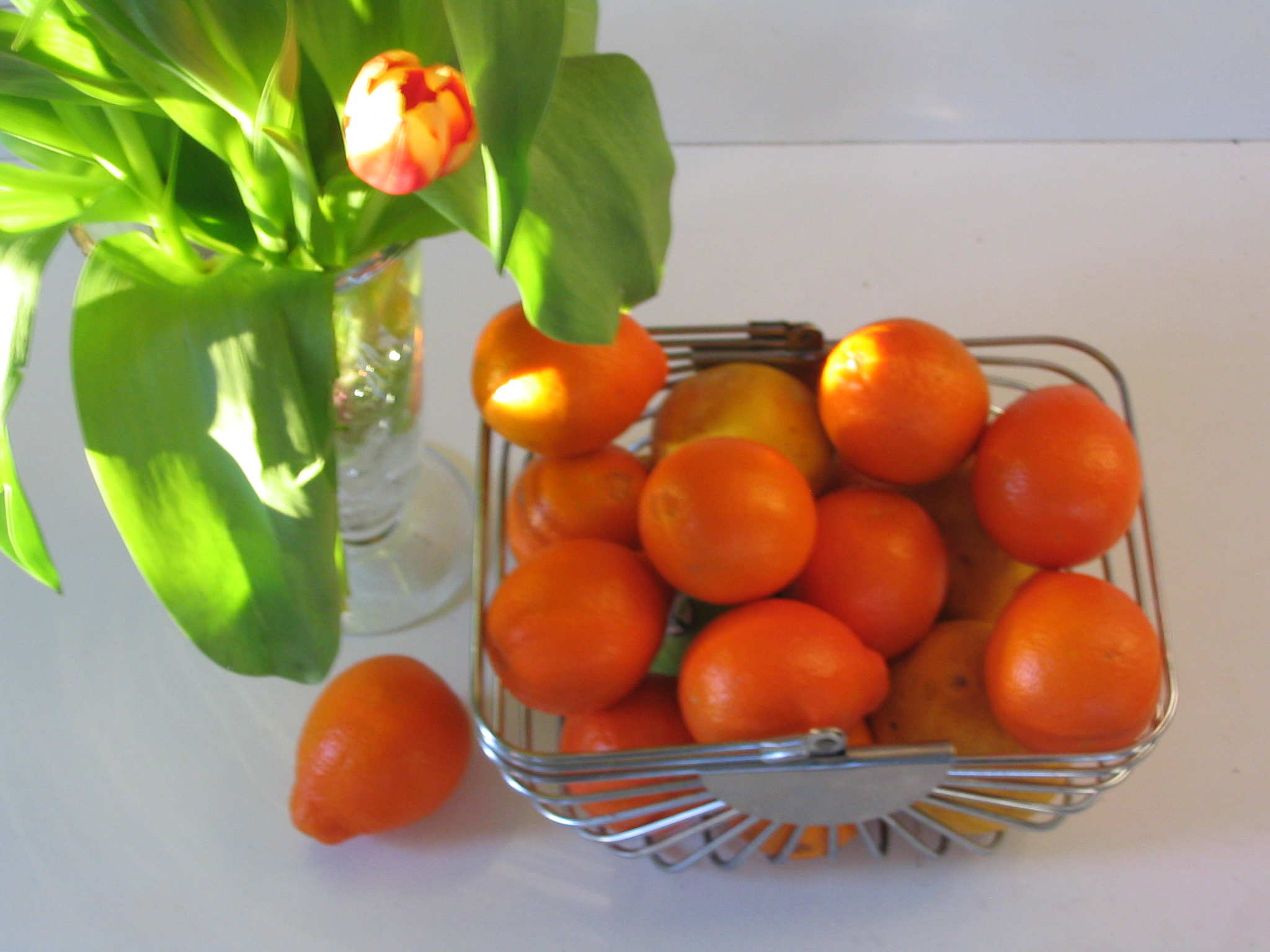
"Summer Clementines" (2008) by Galina Stepanoff-Dargery
NEW! Click esquire.com
to go to my new column at Esquire Magazine.
ARCHIVE: Readers may now access
an
Archive of all past newsletters--each annotated--dating back to July,
2003, by simply clicking on www.johnmariani.com/archive
SUBSCRIBE AND
UN-SUBSCRIBE: You may subscribe anyone you wish
to this newsletter--free of charge--by
clicking here.
In
This Issue
LOOKING
FOR NESSIE IN THE SCOTTISH HIGHLANDS By Suzanne Wright
Visiting The Glenlivet--Home Of the Single Malt Scotch by Robert Mariani
NEW YORK CORNER: NIZZA by John Mariani
NOTES
FROM THE
WINE CELLAR: THE PRIORAT STYLE
by Brian Freedman
QUICK
BYTES
~~~~~~~~~~~~~~~~~~~~~~~~~~~~~~~~
LOOKING
FOR NESSIE IN THE SCOTTISH HIGHLANDS
By Suzanne Wright

INVERNESS CASTLE
The
romance of rail travel, so much a part of
19th and 20th century culture, is in 2008 still exemplified by the
four-day Royal
Scotsman excursion from Edinburgh to the rugged Western
Highlands.
 We passengers—just 36 of us from the U.S., the
U.K. Australia, Germany—followed a bearded bagpiper onto the shiny
burgundy carriage where we were welcomed with champagne. Our
leaders were straight from central casting: Michael, the train
manager, was witty and Sandra, our hostess, wore smart tweeds and had a
plummy accent.
We passengers—just 36 of us from the U.S., the
U.K. Australia, Germany—followed a bearded bagpiper onto the shiny
burgundy carriage where we were welcomed with champagne. Our
leaders were straight from central casting: Michael, the train
manager, was witty and Sandra, our hostess, wore smart tweeds and had a
plummy accent.
My cabin, identified by “Ms. Wright” in script
over the door, is tastefully decorated with subtle paisley and plaid,
dark woods, gleaming brass and a shower with a heated towel rack.
Many a “captive” travel experience results in dreary
food, disheartening on such a journey. But from the tiny
galley—just eight steps from the wall at one end of the galley to the
refrigerator, and the corridor is less than two feet wide—Chef Ian
Murray turns out an exceptional parade of dishes: omelets, French
toast, monkfish, venison, potted shrimp, foie gras, scones, carrot
cake, cheeses, chocolate soufflé, honey and oatcakes and
truffles. Most trains, he says, have off-site kitchens. “We can
only carry what we need." When asked to describe his food, he says, “I
want it to be ‘fine house party food.' Most people’s expectations
are we’ll just have beef and potatoes.” He sources seafood and
meat locally where he can, tying into location known for venison, say,
or fish. Murray tests the menu (which changes every two months)
for up to five weeks prior to the season’s start.
We gathered in the observation car for
cocktails
and conversation or afternoon tea. 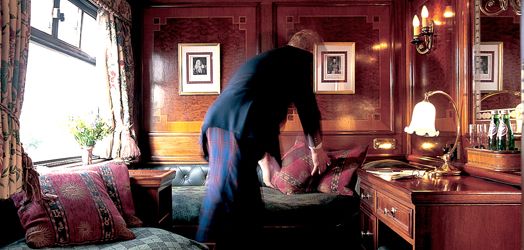 On formal evenings, the men
don kilts or tuxedos, the women little black dresses. The
answer to what’s under a Scotsman’s kilt? The Loch Ness Monster,
I’m told with a grin. On some nights, fiddlers, accordion players and a
harpist come onboard after dinner to entertain as you sing along,
plied by one of the 36 whiskies served. We stabled overnight, so
everyone was well rested.
On formal evenings, the men
don kilts or tuxedos, the women little black dresses. The
answer to what’s under a Scotsman’s kilt? The Loch Ness Monster,
I’m told with a grin. On some nights, fiddlers, accordion players and a
harpist come onboard after dinner to entertain as you sing along,
plied by one of the 36 whiskies served. We stabled overnight, so
everyone was well rested.
By day, the famed landscape rushes by—sweeping
glens and black lochs
(lakes)—as we crowded the outdoor viewing platform, glasses clinking,
the
tracks disappearing behind us. We caught a glimpse of the Isle of
Skye. There’s an excursion each day: a Highlander spins
stories, we boarded a ferry to tour Mt. Stuart, Britain’s most
spectacular Gothic House, we visited a beach, we hike Ben Nevis,
Britain’s highest mountain.
The stately pace encourages conviviality and many of us exchange email
addresses before we disembark.
Rates for The Western Excursion begin at $4,960.
Loch Ness Lodge
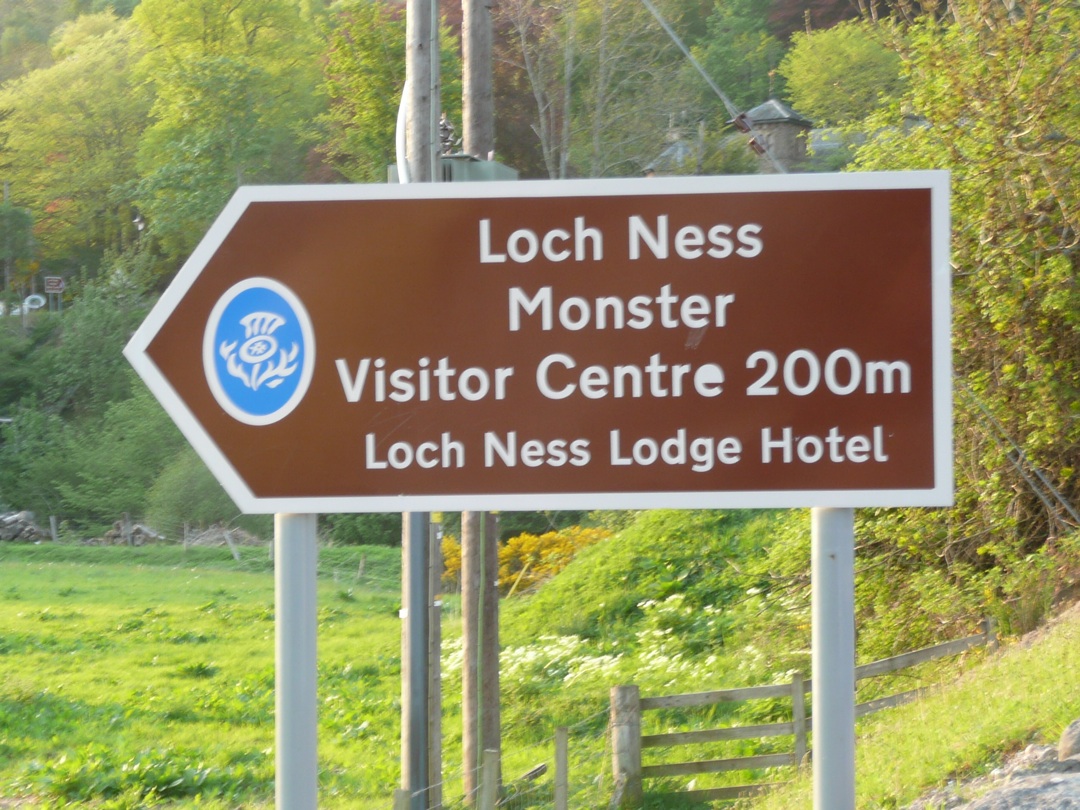 I
made
my way up to Nessie’s
kitschy hometown.
I
made
my way up to Nessie’s
kitschy hometown.
Loch Ness is the country’s second largest loch,
a large, fresh, deepwater lake 20 miles or so south of Inverness.
After a visit to The Loch Ness Exhibition Centre, founded by explorer
Ranulph Fiennes, I am disabused of the idea of the fabled creature, in
spite of its renewed popularity courtesy of the 2007 movie "The Water
Horse: Legend of the Deep." But it’s no fable that the nearby
Urquhart Castle, situated on a rocky peninsula of Loch Ness, was blown
up in 1692 to prevent it becoming a Jacobite stronghold. Walking
around the tragically romantic ruins on a bright, summer spring day, I
was not surprised to learn it’s a frequent spot for wedding ceremonies.
The days are long in May, so when I finally arrive
at The
Lodge at Loch
Ness (below), it’s
well into dinnertime. Host Scott Sutherland
greets me
at this newly opened five-star B&B named by The Independent as one
of the 10 most romantic places to stay in the U.K. The Sutherland
family, which also owns self-catering cottages adjacent to the Lodge,
aims to create a relaxing retreat with top-notch accommodations and
cuisine and they have. Local craftsmen have given the space an artisan
feeling; subtle thistle, check and plaids evoke the classic elements of
the Highlands, updated with such contemporary touches as aubergine
walls. Scott shows me to the handsome Maree Room (rates begin at
$360 per night, double occupancy) with its views of the lake.
There’s a hot tub and sauna guests can use, and Sutherland will arrange
massages, boating excursions or golf at one of the nearby courses.
After I am settled in, I head downstairs to
the parlor for a pre-dinner
cocktail, a locally distilled gin (my notes fail me, but I believe it
was from the Shetland Islands) and tonic. Chef Ross Fraser, who
trained with Marco Pierre White, uses the freshest seasonal ingredients
to create dishes that marry French techniques with Scottish
ingredients. Dinner (five courses at $90 per person) unfolds at a
leisurely pace. There’s a creamy, mellow velouté of
zucchini with Inverloch goat's cheese; a refreshing and delicate West
Coast crab salad with cucumber juice and crème fraîche;
braised
Morayshire pork belly with a white onion compote; a selection of
cheeses with handmade oatcakes; and a luscious vanilla and strawberry
trifle, followed by coffee and petit fours. I tumbled into bed at 11:30.
Breakfast the following morning included eggs
scrambled with smoked salmon and suggestions for the day’s
touring.
Scott waved goodbye as I headed out for
points
south. I may not have managed a glimpse of the sea serpent, but I
found a sumptuous respite worthy of discovery.
Suzanne Wright
is a
writer living in Atlanta and founder of www.writersquared.com.
~~~~~~~~~~~~~~~~~~~~~~~~~~~~~~~~~~~~~~~~~~~~~~~~~~~~~~~~~~~
Visiting
The Glenlivet-- Home Of the Single Malt Scotch
by Robert Mariani

Speyside
As
we flew in over the Scottish Highlands to Edinburgh, I couldn’t help
noticing how much the landscape below us resembled a bolt of Scottish
plaid. Stripes of dark umber crisscross huge square fields of brilliant
green, watery silver patches and wine-colored heather.
Once on the ground, we drove two hours north to the
Cairngorm Mountains in the Speyside region, passing fields flecked with
cloud-colored sheep and rusty-coated cows (or “coos,” as the old Scotch
dialect pronounces it.) The Victorian stone houses are few, far between
and all immaculately maintained.
We were headed to the Glenlivet Distillery,
birthplace of the original single malt Scotch back in 1824. It’s
mid-July, and if you’re looking to escape the summer heat, this is
where to come. During my 4-day stay in the Speyside area, the
temperature never rose above 60 degrees, and the breezes were
constant and exhilarating as they came off the lochs and across the
mountains.
The Glenlivet distillery is about 900 feet
above sea level in the starkly beautiful Cairngorm Mountains. We
arrived just in time for a late lunch at the charming nine-room
Victorian Minmore House Hotel (below), once the family home
of the founder of Glenlivet, George Smith. It still feels very much
like a home rather than a hotel and the proprietors, Victor and Lynne
Janssen, are clearly committed to maintaining that commodious feeling.
Lunch began with a bowl of the Inn’s
creamy, lightly minted pea soup that evoked the scents and flavors of a
fresh mid-summer garden. The soup was accompanied by slices of the rich
and grainy “Minmore Health Bread,” and if this bread is as healthy as
it was delicious, everyone should eat a loaf a day.
The main course was a breast of young
Guinea-fowl in a luscious red port wine sauce. The meat ran with
flavorful juices and was served with a “Celeriac Smash,” a somewhat
under-appreciated celery variety that tastes like a blend of celery and
parsley. Some nice, light potato croquettes complete the entrée.
It was indeed one of those main courses that satisfies without
over-filling.
Dessert was a fresh Scottish berry Pavlova roulade
wrapped around a mixture of local raspberries, strawberries and
blueberries. After lunch we repaired to the parlor to
sip some 12-year-old Glenlivet single malt as we gazed through the bay
windows out over the Minmore’s lush four acres of gardens and the
surrounding hillsides.
There Will Be
Whisky
We spent the night
further back
down the mountains at the Macdonald’s Aviemore hotel/motel/shopping
mall/amusement area/convention center—a pale stucco, rather
characterless, “1984” style enclave that has nothing to do with the
quaint little town of Cairngorm that it’s come to inhabit. Cairngorm
itself features a charming Victorian hotel, tourist shops, an old
steam-driven dinner train ride, golf courses, and a fly fishing stream,
all within walking distance of each other.
From the town, it’s a little over an hour’s drive north along
winding mountain roads to The
Glenlivet Distillery (below, left)
situated at over 900 feet above sea level in
a wind-chilled, rocky landscape, the oldest legal distillery in
all of Scotland.
The 12-year old Glenlivet Single Malt is the best-selling
single malt in the U.S. and among the top three world-wide. It is also
the “springboard” or “platform,” if you will, for a rich and varied
family of Glenlivet single malts. Note well: to be officially labeled a
“singe malt,” a bottle must only contain whisky distilled from malted
barley and produced at a single distillery. This distinguishes it from
the numerous Scotch “blends” available which mix their whiskies from
several distillers. It should also be noted that not all single malts
bear 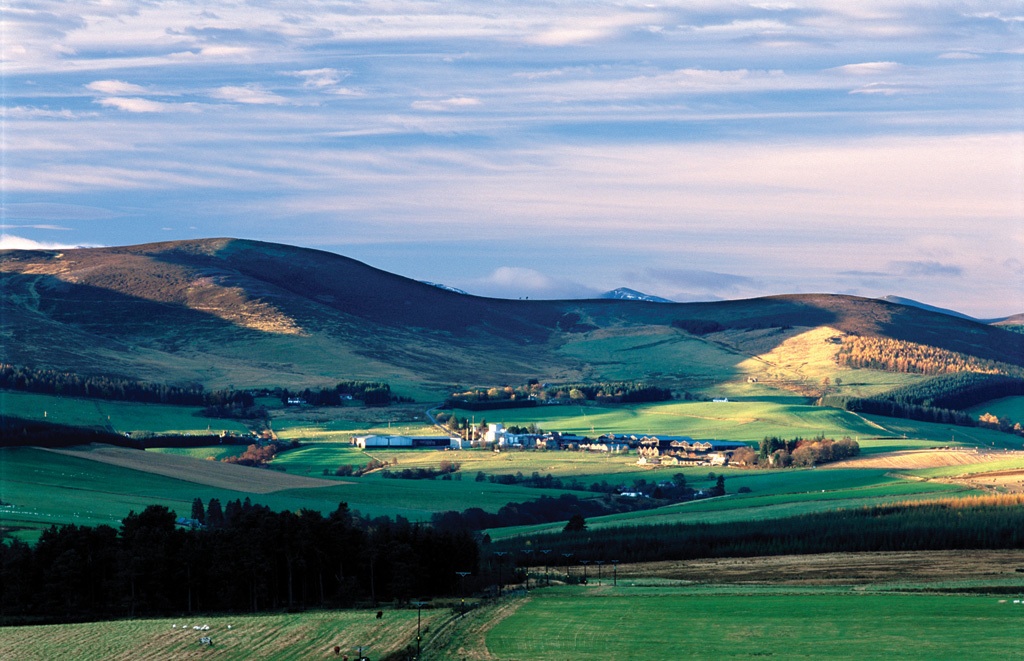 the strong peat flavor so often associated
with this style of
whisky. In fact, there is no peat smoke flavor in any of the Glenlivet
single malts or in any of the Highland Speyside whiskies. That is a
characteristic relegated to the lowland and island-located single malt
whiskies.
the strong peat flavor so often associated
with this style of
whisky. In fact, there is no peat smoke flavor in any of the Glenlivet
single malts or in any of the Highland Speyside whiskies. That is a
characteristic relegated to the lowland and island-located single malt
whiskies.
The Glenlivet 12-year old embodies the classic
Speyside flavor with its creamy opening and layered notes of fruit and
chocolate. which it gets from the French oak casks in which it is
finished. The 15-year old is a milder, subtler whisky, darker in
color but somewhat lighter in taste, with a more nuanced
palette of flavors. Aged in European and American oak casks, The
18-year
old is, as might be expected, more complex than it’s younger brothers,
and to my taste buds at least, seemed the most friendly.
With a hint of sherry up front, it has a smooth, beautifully rounded
flavor that does not diminish as it swirls about the mouth.
The 21-year old provides a slightly stronger
sherry opening with a full-bodied flavor that one of our Glenlivet
hosts referred to as “Christmas cake.” At about $300 a bottle, the
Glenlivet XXV is the oldest permanent addition to the Glenlivet line.
It is a rich, full-bodied whisky with strong sherry notes and as
another of our hosts put it, “you can almost cut this one in slices.”
Rarest of all—and the most expensive at about
$750 a bottle- is Glenlivet’s 1969 Cellar Collection. It opens with a
mild but almost operatically rich sherry note that spreads out long and
slow on the tongue and just seems to get mellower by the second.
Being at the Glenlivet Distillery, you also
get to sample some of the more obscure versions of this family of
distinguished single malts. There is, for instance, the “cask strength”
Nadura that spends its entire 16 years aging in bourbon casks. It’s
first sip can be a bit strong but with just a splash of Speyside water
it smoothes out and finishes quite beautifully.
Of course, no distillery tour would be
complete without viewing the huge goose-necked copper stills where the
various whiskies are distilled. On this particular visit, we also got a
demonstration of one of the earliest and most primitive forms of Scotch
single malt making. It’s called “smuggler’s style” because it
replicates how single malts were made up here in the mountains back in
the early 1800’s when whisky-brewing was illegal under British law.
Using just a small campfire and a copper gooseneck still that’s roughly
the size of a beer keg, the malted barley is distilled to a clear white
liquor that drips out into a wooden bucket. Visitors are offered a
taste, and in my group of about 25 people, every single head did a kind
of pull-back double take at the first sip.
Again, though, the simple addition of some water
took the initial sting out of the whisky and I could even savor some
interesting after-notes of what to me, tasted a bit like pumpkin seed.
On our last night in Scotland, we spent a
bone-chilling half-hour or so sipping some 15-year old Glenlivet on the
rocky shore of the infamous Loch Ness near Inverness. In this high
latitude, at 9 pm the sun was still very visible behind high pewter
clouds and the wind off the Loch was stiff and wintery. No sign of the
Monster, and somewhat to my surprise, not a single sail or motor boat
on the choppy gray waters either. The Loch and its surrounding
mountains are majestically beautiful with just a few white stone farm
houses dotting the deep green landscape.
If you are like me and not a fan of intensely hot
summer weather, and you are easily seduced by a wee dram o’ “the
creature” (whisky), you should be very content here in the Scottish
Highlands where July seems more like March, and the whisky seems to
seep sweetly up through the landscape in the warmest and friendliest of
ways.
Robert
Mariani is a freelance
writer who lives in Bristol, RI. He is co-author of the memoir Almost Golden.
~~~~~~~~~~~~~~~~~~~~~~~~~~~~~~~~~~~~~~~~~
NEW YORK CORNER
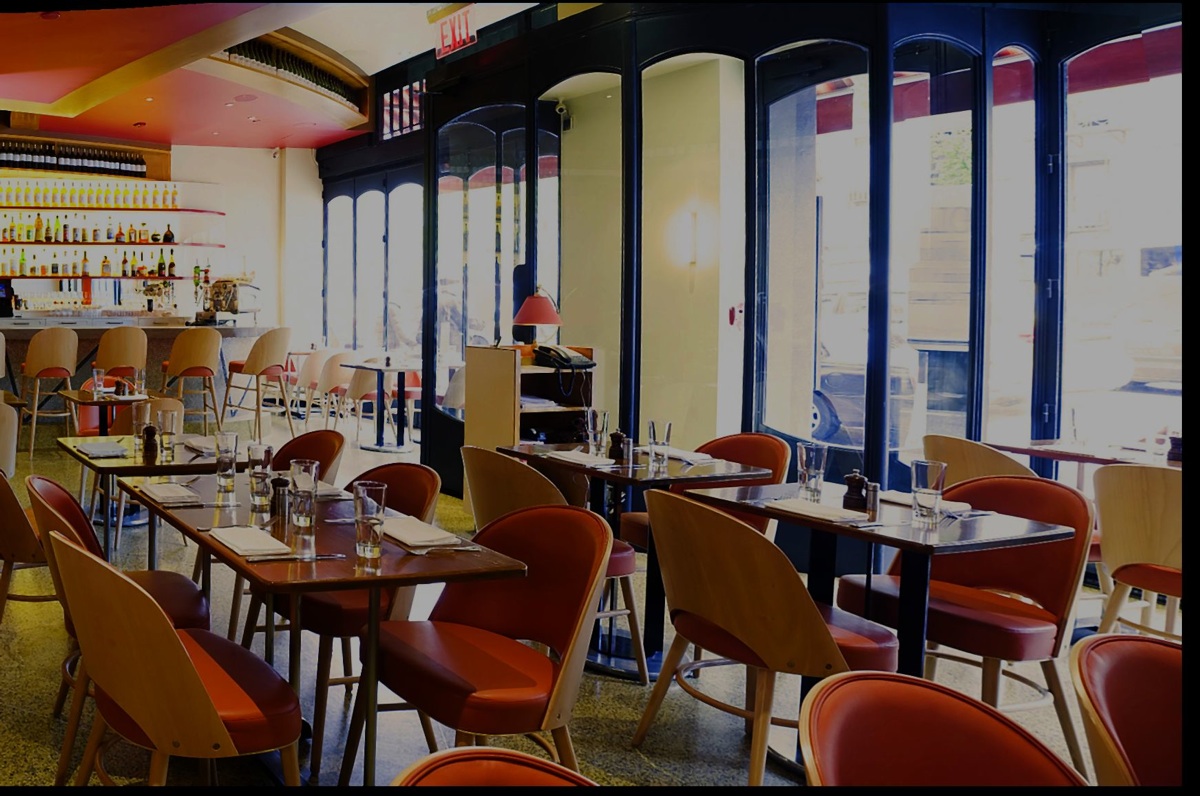 NIZZA
NIZZA630 Ninth Avenue (at 44th Street)
212-956-1800
www.nizzanyc.com
by John Mariani
Andy D'Amico has for two decades now been among New York's top chefs, first making his mark at long-gone Sign of the Dove, then opening his own two fine French bistros, Nice Matin and Marseilles. Now, with Nizza, he seems more grounded than ever in providing the kind of rustic Italian trattoria fare that is impossible not to love, especially the array of antipasti with Ligurian regionalism. "Nizza" is Italian for Nice, just across the Ligurian border, and they share many of the same flavors.
The storefront restaurant has just 65 seats indoors (20 outside right now), done up with warm sienna brown and ocher yellow colors, a white marble bar, and a wall of wines (with 30 by the glass available). The waitstaff is friendly, knows the long ten-category menu well, and caters to requests, as when I asked for the loud music to be turned down a notch or two, or three.
Among the antipasti were irresistible foccaccette--fried ravioli filled with crescenza cheese; there is a Ligurian torta layered with Swiss chard and pancetta, and one of the best is roasted tomatoes with sheep's milk ricotta. Right up there is deliciousness is the braised pork belly done in a ragoût of summer beans. You are just getting started.
Don't miss the cured meats here--bresaola, capicola, mortadella, prosciutto, Speck, pancetta, duck salami, and hot soppressata, or the cheeses, from oozy French Époisses and Pont l'Évêque to sweet Italian Gorgonzola and ubriaco (washed with wine), all served with great crusty bread. These also go onto toasted panini if you just want to drop in for something light with a glass of wine. The fillings are myriad, from Kobe beef with roasted tomato, fried onions and red pepper rémoulade to house-cured sardines with tapenade and eggs.

You can't of course, skip the pastas! Just point to any of them--the pesto lasagna with crescenza cheese is luscious, pansôti (fat bellies) of herbs and greens in a creamy walnut sauce very rich, and the linguine with swordfish, tomato, pignoli, raisins and anchovies mimics the cooking of Sicily.
There's still more: wonderful pizza with pancetta bacon, taleggio, red onion, and chile flakes, and "terror stricken beef," which is a flat iron steak that has been marinated in fiery spices and served with shallots, capers, anchovy and a vinegar sauce. I felt true bliss rather than an iota of terror when faced with this terrific, full-flavored slab of beef. If you want to go lighter, I recommend the branzino fillet with roasted artichokes, potatoes, and olives.
Pastry chef John Lee does some simple, old-fashioned Italian desserts like zuppa inglese with berries, a cooling granita di caffe, and a lovely l;light lemon semifreddo.
As you might imagine, none of this costs very much, so that you can pick and choose a half dozen items and a little wine and be out for under $40. Antipasti run $5-$7 (a platter for the table is $15), the panini $7-$9, the oven-baked dishes $9-$11, and the specialties like the steak and the branzino $10-$16.
Nizza is the kind of place where you'd love to pull up on a Vespa or in an old Fiat 850 Spider, nosh away with friends for a couple of hours, then take in a revival of "Marriage Italian Style" or "Swept Away." Hey, maybe you can talk D'Amico from showing them on DVD over the bar. Sounds sweet to me.
NOTES FROM THE WINE CELLAR
THE PRIORAT STYLE
by Brian Freedman
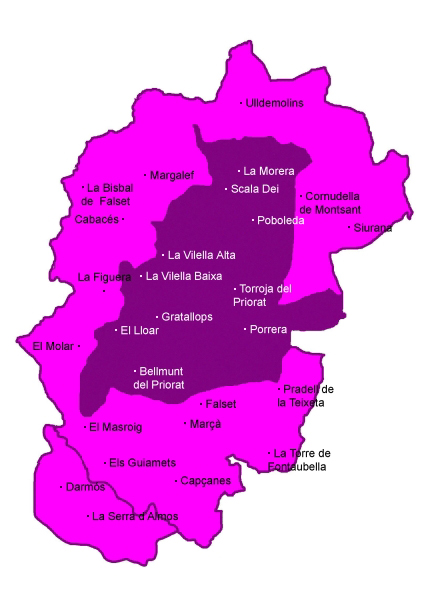 Salus
Alvarez, winemaker at Vall Llach and one of the most important
interpreters of the Priorat style, arrived at the restaurant just in
time for a final bottle. He had spent the morning conducting one of the
most illuminating winery tours I’d ever had: after rain had scuttled
his plan to tour the vineyards with us, he walked the group I was
leading through the barrel-packed cellars of the winery, insisting we
taste the individual lots before finally sampling Vall Llach’s
eponymous flagship bottling. Afterward he sent us all to a nearby
restaurant for lunch.
Salus
Alvarez, winemaker at Vall Llach and one of the most important
interpreters of the Priorat style, arrived at the restaurant just in
time for a final bottle. He had spent the morning conducting one of the
most illuminating winery tours I’d ever had: after rain had scuttled
his plan to tour the vineyards with us, he walked the group I was
leading through the barrel-packed cellars of the winery, insisting we
taste the individual lots before finally sampling Vall Llach’s
eponymous flagship bottling. Afterward he sent us all to a nearby
restaurant for lunch.
Restaurante Lo
Teatre is housed in a dramatic 19th-century space
originally built as a theater. By the time Salus arrived, we had
finished our meals (chorizo and eggs; sausage and fries; country
wine drunk from glass tumblers) and were ready to open a bottle of such
rarity, such unusual constitution, that I couldn’t imagine doing so
without the man who had made it to serve as our tour guide during my
annual wine-region excursion of the Wine School of Philadelphia.
The Vall Llach
Aigua de Llum 2006, a perfumed beauty crafted in quantities that
make the DRC Romanée-Conti look mass-produced by comparison, is
one of those wines that changes the way you look at a region. Composed
primarily of viognier with old vines garnacha blanca and a bit of
macabeo added for seasoning, the Aigua de Llum was a deeply floral,
richly textured white that, over the course of the half-hour it spent
in the glass as Salus explained every twist and turn of its evolution,
spoke of the region’s philosophy every bit as exuberantly as its more
famous reds.
Those reds, produced in this rugged region two hours
southwest of Barcelona by car, are responsible for Priorat’s meteoric
rise. The permitted grape varieties are garnacha, cariñena,
syrah, merlot, and cabernet sauvignon, though it’s the first two, more
often than not, that set the tone for the wine. Old vines of both stud
the vertiginous mountainsides of the region, the rows typically
following the curvature of the slopes and terraces and often not
planted in the perfectly straight lines of so much of the rest of the
wine world.
But more than the grapes themselves, it is the land
that provides the lion’s share of personality in the wine. In that
regard, Priorat reminded me more of Burgundy than anywhere else in
Spain. For here, no matter which producer I visited—modern, gravity-fed
Mas Perinet; sprawling Mas d’en Gil (photo below); international
superstar and iconoclast Costers del Siurana, whose top wines are the
intense Clos de l’Obac and the
sweet Dolç de l’Obac;
or Vall Llach—the philosophy
was the same: Use the grapes to express the land as clearly and cleanly
as possible.
The geological secret here is llicorella, the
silver-gray, occasionally red-streaked slate on which so many of the
best vines are planted. This crumbling, ancient land allows the roots
of the vines to penetrate deep into the earth in search of water and
nutrients, and results in a pronounced minerality in the wine, often
regardless of the dominant grape.
That stony, mineral-inflected character was the thread connecting so
many of the wines I tasted over the course of a week long stay. And
each
one, it seemed, was inextricably tied to the unique parcels of vineyard
where its constituent grapes were grown.
But
what of these wines with the local food? Many of Catalonia’s
forward-thinking, paradigm-shifting restaurants, after all, would seem
to be at odds with the wines, would seem to exist at the opposite end
of the spectrum from such terroir-driven bottlings.
But in Priorat, even the more molecular-leaning
kitchens keep one toe in the pool of traditionalism: I dined at a wide
range of restaurants during my stay in the region, and all of them,
even the most avant-garde, still maintained solid contact with the
culinary traditions of the area, which made pairing the food with the
local reds and whites far less treacherous than it otherwise would have
been.
My meal at Irreductibles in Gratallops, for
example—a striking, set-menu gem whose chef, Brazilian Ricardo
Siginore, seems totally unafraid to push the envelope in terms of both
the underlying philosophy of his dishes and the flavors he coaxes out
of them—included preparations that ranged from a magnificently
unexpected seared tuna with casing-less pig-trotter sausage (gorgeous
with the Cims de Porrera Priorat
Solanes 2004) to a sweet-savory ‘petit four’ that looked like a
poached egg but was actually a sour Greek-yogurt ‘white’ with sweet
oregano and a deep orange ‘yolk’ of pureed carrot, orange juice, olive
oil, and sugar held together with a vegetable gelatin. It would be
tasty with so many of the licorice-inflected garnacha blanca-based
whites of the region, or, even better, with a late-harvest white that
would highlight the sweeter aspects of the dish and transition
perfectly to the dessert courses. At this dinner, though, it was
fabulous with nothing more exotic than coffee.
 At Cal
Llop, also in Gratallops (below)
, meaty sea bass with mammoth langoustines cosseted in a crispy shell
were perfect alongside the 2006 Les
Sorts Jove. This juicy red wine from the abutting Montsant
region had gone through carbonic maceration, and as a result, even its
constituent cariñena, garnacha, and syrah were light on their
feet.
At Cal
Llop, also in Gratallops (below)
, meaty sea bass with mammoth langoustines cosseted in a crispy shell
were perfect alongside the 2006 Les
Sorts Jove. This juicy red wine from the abutting Montsant
region had gone through carbonic maceration, and as a result, even its
constituent cariñena, garnacha, and syrah were light on their
feet.
Heady foie gras mi-cuit at Cellers de
Gratallops, down the street from (and owned by) Costers del Siurana, sang alongside
that producer’s Usatges bottling, whose ripe fruit and well-calibrated
acid balanced out the liver’s almost dizzyingly richness. The foie
also, I suspect, would have paired spectacularly with the Dolç
de l’Obac 1998, a late-harvest stunner produced from garnacha, cabernet
sauvignon, and syrah that is without a doubt one of the best sweet
wines I’ve ever tasted.
The
traditional foods of the region, of course, provide even more options
when it comes to pairing. The olive-oil-marinated veal (more deeply
beefy than any I’ve ever had) at El
Cairat in Falset worked just as well with the old-vines
cariñena Onix Selecció as it did with the meaty
syrah-based reds from the region. At Venta
d’en Puvill, a meat-lover’s paradise in Cornudella-Poboleda, a
seemingly endless procession of simply, aggressively seasoned beef,
veal, rabbit, lamb, and pork arrived hot off the wood grill and seemed
custom made for Mas Perinet’s earthy, complex “Gotia” bottling from Montsant.
That’s what makes these wines so delicious and
useful at the table: Their ability to pair well with such a
surprisingly wide variety of foods and cooking styles. Much of that
success is due to the natural character the land itself imparts on the
wines. But it seems that even more credit is owed to the people who
craft them, and who have the confidence and good sense to allow the
earth to speak more loudly than any stylistic desires they themselves
might possess. No matter what part of the world your bottlings express,
that is one of the universal hallmarks of great winemaking.
~~~~~~~~~~~~~~~~~~~~~~~~~~~~~~~~~~~~~~~~~

LOOKS GREAT IN
THE LIVING ROOM!
“Pork stones,” formed by natural stone mixes with minerals were exhibited at the Suzhou Int’l Expo for Natural and Weird Stones, selling for about $17 per kilo.
WHO
ELSE INDEED?
“As soon as I laid eyes on this burger, I completely understood why Australia is referred to as Oz. This monster had to have been created by a wizard. Who else would think to top a beef patty with fried eggs, grilled pineapple, and pickled beets? This Down Under specialty has ‘em all. . . . We’re told Australians consider it ideal beach food—when they’re done eating, they simply head into the surf and wash off.”—Lawrence Karol, “A Taste of July,” Gourmet (July 2008).
QUICK BYTES
* On July 29 at NYC’s Adour Alain Ducasse, Mitch Cosentino (winemaker & partner) of Cosentino Winery and partners Larry Soldinger, Edie Soldinger & Ben Soldinger will pair their wines with Chef Tony Esnault’s 4-course dinner. $400 pp. Call 212-710-2277.
* On Aug. 12 in Chicago, Cafe
Matou’s Le Pays Basque Wine Dinner wil be held with Chef Charlie
Socher preparing a 5-course dinner with wines selected by Wine
Director James Rahn. $75 pp. Call 773-384-8911.
* On Aug. 13 Chicago’s Mity Nice Grill presents a
4-course Beer Dinner hosted by Master Brewer Jason Ebel of Two Brothers
Brewing Company, with special guest, master sommelier Alpana Singh, and
food by Chef John Chiakulas, $40 pp. Call 312-335-4745.
* The Ritz-Carlton, San Francisco, offers a $250,000 Ultimate Access packages, incl. a private heli-tour to Sonoma’s Chalk Hill Estate Winery; private lunch with Chef Didier Ageorges and 6 signed bottles of rare wines from winemaker Peggy Furth; a heli-visit and tour of closed-to-the-public Emery Estate Ranch and 6 signed bottles; private wine tasting at Hanzell Vineyards with 6 signed bottles from the winemaker’s private collection; 3 nights in The Ritz-Carlton Presidential Suite; 8-course in-suite Louis Roederer Cristal dinner prepared by Chef Ron Siegel, with champagne pairings by sommelier Stephane Lacroix; a $25,000 art and design shopping spree at Gump’s and more; shopping for dinner ingredients with Ron Siegel and cooking alongside him for another dinner. Call 415-773-6171.
* On Aug. 13 in St. Helena, CA, Chef/Co-Owner Todd Humphries will present his Third Annual Tomato Dinner at Martini House, with wine by Peay Vineyards, and guests John DeBello, director of "Attack of the Killer Tomatoes," and Kevin Morrisey, director of photography, with a showing of the 1991 sequel Killer Tomatoes Eat France. $165 pp. Call 707-963-2233, ext. 1 or visit www.martinihouse.com.
* On Aug. 14 Hotel
Granduca in Houston hosts a reception featuring former White
House Executive Chef, Walter Scheib, benefiting The Brilliant Lecture
Series. $100 pp. Call 713-418-1000. Visit
www.granducahouston.com
* On Aug. 21 in Chicago, NoMI’s
“Wine Engagement” series of wine and gastronomy events will have
Executive Chef Christophe David collaborating with Advanced Sommelier
Fernando Beteta to pair a menu with Livio Felluga Wines of Italy. $150
pp. Call 312-335-1234; visit www.NoMIrestaurant.com.
Everett Potter's Travel Report:

~~~~~~~~~~~~~~~~~~~~~~~~~~~~~~~~~~~~~~~~~~~~~~~~~~~~~~~~~~~~~~~~~~~~~~~~~~
Eating Las Vegas is the new on-line site for Virtual Gourmet contrinbutor John A. Curtas., who since 1995 has been commenting on the Las Vegas food scene and reviewing restaurants for Nevada Public Radio. He is also the restaurant critic for KLAS TV, Channel 8 in Las Vegas, and his past reviews can be accessed at KNPR.org. Click on the logo below to go directly to his site.
~~~~~~~~~~~~~~~~~~~~~~~~~~~~~~~~~~~~~~~~~~~~~~~~~~~~~~~~~~~~~~~~~~~~~~~~~~~
Tennis Resorts Online: A Critical Guide to the World's Best Tennis Resorts and Tennis Camps, published by ROGER COX, who has spent more than two decades writing about tennis travel, including a 17-year stretch for Tennis magazine. He has also written for Arthur Frommer's Budget Travel, New York Magazine, Travel & Leisure, Esquire, Money, USTA Magazine, Men's Journal, and The Robb Report. He has authored two books-The World's Best Tennis Vacations (Stephen Greene Press/Viking Penguin, 1990) and The Best Places to Stay in the Rockies (Houghton Mifflin, 1992 & 1994), and the Melbourne (Australia) chapter to the Wall Street Journal Business Guide to Cities of the Pacific Rim (Fodor's Travel Guides, 1991). THIS WEEK: A Report on The Four Seasons Jackson Hole. Click on the logo below to go to the site.

~~~~~~~~~~~~~~~~~~~~~~~~~~~~~~~~~~~~~~~~~~~~~~~~~~~~~~~~~~~~~~~~~~~~~~~~~
MARIANI'S VIRTUAL GOURMET NEWSLETTER is published weekly. Editor/Publisher: John Mariani.
Contributing Writers: Robert Mariani,
Naomi
Kooker, Suzanne Wright, John A. Curtas, Edward Brivio, Mort
Hochstein, Suzanne Wright. Contributing
Photographers: Galina Stepanoff-Dargery, Bobby Pirillo. Technical
Advisor: Gerry McLoughlin.
Any of John Mariani's books below
may be ordered from amazon.com by clicking on the cover image.
 My
newest book, written with my brother Robert Mariani, is a memoir of our
years growing up in the My
newest book, written with my brother Robert Mariani, is a memoir of our
years growing up in the For those of you who don't think of the Robert and I think you'll enjoy this very personal look at our --John Mariani |
 |
 |
 |
 |
 |
 |
© copyright John Mariani 2008
